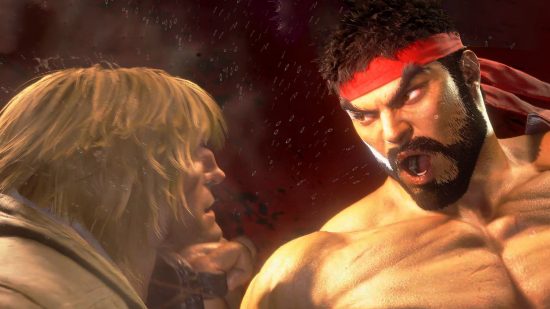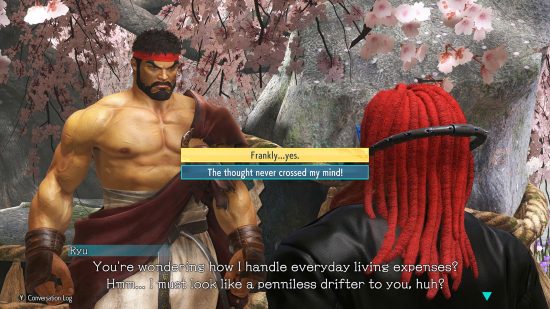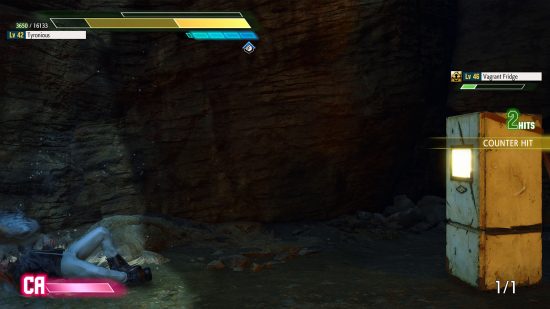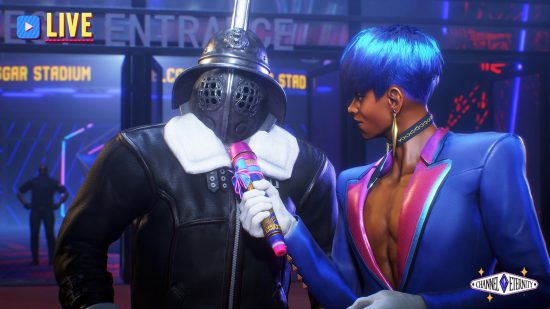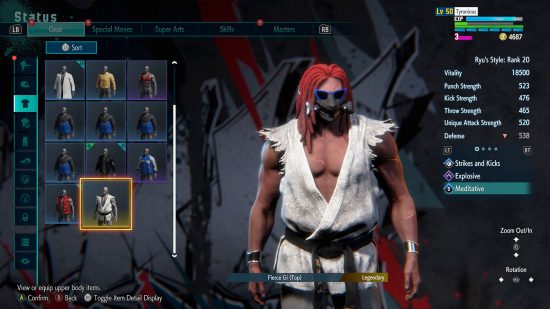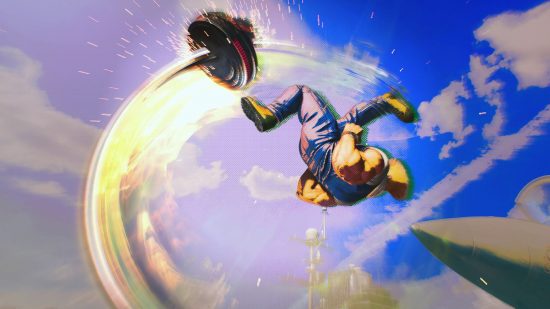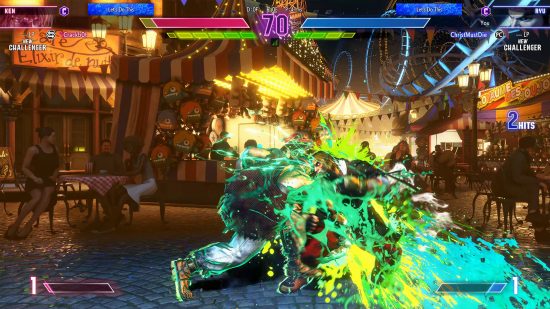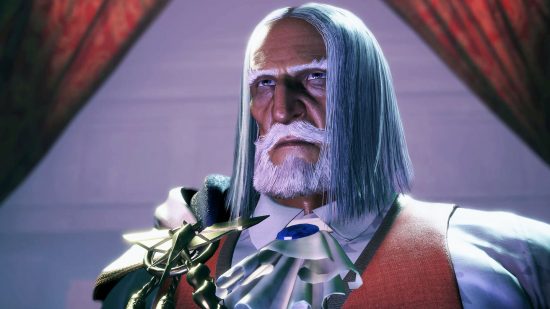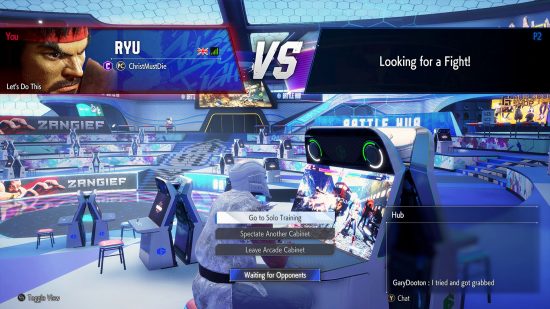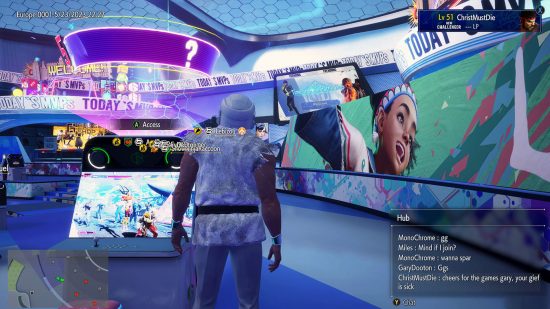Our Verdict
This is the first Street Fighter game in a long time where it feels like players of all skill levels are welcome. While World Tour mode is disappointing, the sheer scope of SF6 means you don’t need to wait for the inevitable Ultra Edition before jumping in.
The critical reception to Street Fighter 5’s barebones launch may have been the best thing to happen to Capcom. For the first time in the series’ history, Street Fighter 6 features everything fighting game fans have been asking for in one complete package. From the lengthy single-player World Tour mode to the community-driven Battle Hub, as we found out while playing for our Street Fighter 6 review, the game isn’t afraid to tread new ground in order to offer players something different.
World Tour mode puts players in the shoes of a custom fighter who is on a journey to discover what strength truly is. You have a rival for about ten minutes, but he goes off the rails in pursuit of power, causing you to go on a journey around the world to save him. You start the game as a student of Luke, taking on his normal moves and some of his special attacks. Your avatar can learn from every launch character, giving you the chance to mix and match special moves and super arts to create the perfect fighter.
As you continue to fight, your bond increases with your master, which unlocks the rest of their move set. Watching the relationships grow with each of the Street Fighter 6 roster was easily the best part of World Tour. With Ryu as your master, he opens up about how he lives on a day-to-day basis, the outfit Chun-Li picked for him to wear on his frequent trips to the airport, and how Ken handles his finances. Every character has their own unique quirks, but if you don’t switch up your master, you may miss out on unraveling their backstories.
The gameplay loop throughout the main quest generally consists of being told to travel somewhere on the map to beat someone up. You can challenge almost everyone, and NPCs with red text above their heads will actively seek you out. Battling against random enemies earns you experience points that you can spend to purchase skills, providing you with more special moves, additional stats, and extra Super Art and Drive gauges.
While I enjoyed seeing all of the deep-cut Street Fighter references hidden in World Tour, the RPG elements spoiled the majority of the campaign for me. Most of the story mode is spent fighting against the AI, but this isn’t fun when your character is underleveled and ill-equipped. It’s not like fighting CPU level eight in the demo where the AI is extremely good; it’s more that your combos deal very little damage compared to your opponents. There are ways to level the playing field, such as using in-game items to boost your offense and defense, but the fights near the end of the game felt like an uphill battle no matter what bizarre combination I cooked up.
I stuck to the main quest throughout World Tour, and as a result, I found myself constantly needing to farm experience points. There are lots of side quests to get through but, similar to the main quest, these missions just aren’t fun. At one point in the story, you’re asked to fight against a vagrant fridge to track down a special screw. This might look and sound fun (the devs even dressed the fridge with a red headband like Ryu), but these fights can be incredibly frustrating when you don’t have any healing items to bail you out.
Even as a big Street Fighter fan, I’ve always had trouble piecing together elements of the game’s convoluted story. World Tour took me just over 15 hours to complete, and while there were some interesting story beats regarding the new villain, JP, I felt like this mode glossed over events that have been covered by the Street Fighter 6 comic book. Prior to the events of the game, JP managed to frame Ken as being the mastermind of a terrorist attack, forcing him into hiding.
Instead of following the aftermath of these events, it would’ve been better to see the comic’s storyline play out. Without spoiling anything, Street Fighter 6’s story doesn’t answer any of the big questions. World Tour has the potential to weave together an awesome narrative, but instead, we’re left with a largely predictable plot about a fighter trying to save their power-hungry rival.
It’s worth pointing out that there’s a separate arcade mode featured in the Fighters Hub that contains classic comic book cinematics at the end of each playthrough. If you want to learn about all of the launch characters outside of World Tour, this is the only way to do it. Unfortunately, if you’re looking for answers to the big questions raised by the JP and Ken storyline, you might have to wait until DLC characters are added to the roster.
Given the length of the campaign and the depth of the mechanics in Street Fighter 6, I was surprised to find that World Tour doesn’t prepare players for combat. World Tour encourages you to create a custom move set that you won’t be able to use outside of the Avatar Battle mode, and it lets you use items during fights to heal up against powerful enemies. Capcom is using this mode to bridge the gap between casual and experienced players, and it has one more feature up its sleeve that could be a game changer: modern controls.
Modern controls make it easy to learn how to play Street Fighter 6 without having to spend hours learning combos in training mode. Your main attack buttons are reduced from six to three, special attacks can be performed using a single button, and players have access to three auto combos by holding down a trigger and pressing a face button. The biggest drawback to this control type is that your auto combos deal 20% less damage, and you don’t have complete control over your character. That said, do you need complete control if you can get by with consistent auto combos? That’s up to you to decide.
If you haven’t taken the time to seriously learn a fighting game, there’s no reason not to give modern controls a try. They give newbies a chance against considerably better opponents, and it’s a nice way to ease players into the game before they make the step up to classic controls. To top it off, modern controls are legal for the Capcom Pro Tour 2023 – that’s right, you could win $1,000,000 without ever learning a single combo. Esports-level players are concerned that modern controls might be too powerful in the wrong hands, so that should give you an indication as to how good they are.
Capcom’s innovative new control scheme couldn’t have arrived at a better time as Street Fighter 6 is the most difficult game to learn since Third Strike. Come-back mechanics like Ultra Combos and V-Trigger have been replaced by the Drive System, a gauge filled with six stocks that give players access to five techniques. While some of these techniques like Overdrive Art, Drive Reversal, and Drive Parry may feel familiar to returning players, Drive Impact and Drive Rush are going to require hours of experience to adapt to.
The Drive System makes matches feel exciting right out of the gate, as players can utilize powerful combos from the get-go. There’s also a risk-reward element to this mechanic, as it forces players to keep an eye on their Drive Gauge. It’s possible to overextend yourself using a lengthy combo that forces you into a Burnout state. Once you’re in this state, your access to the Drive Gauge is shut off entirely, you become slower and weaker, and you’re susceptible to chip damage. Finally, being hit by a Drive Impact while in the corner will stun you, giving your opponent a chance to land a free combo.
It takes a while for your Drive Gauge to fully recover, creating tense moments where one player is significantly weaker than the other. That’s what makes this mechanic so interesting; despite all of the negative effects it introduces, being in Burnout state isn’t a death sentence. In some scenarios, it makes sense to spend all of your Drive Gauge if you can force your opponent into the corner to limit their attacking options.
While the drive mechanics are a radical new improvement, Capcom has played it fairly safe with the game’s cast, sticking mainly with returning characters from Street Fighter 2, who most fans know and love. However, Street Fighter 6 also introduces six new characters to the mix, with some reintroducing fighting styles we’ve seen before, including Kimberly’s Bushinryu Ninjutsu influence from Guy, and Lily belonging to T Hawk’s Thunderfoot tribe. We also get a new villain that isn’t M. Bison for a change in the form of JP, a cunning businessman who fights with Psycho Power.
When it comes to the competitive side of Street Fighter 6, it’s fair to say that Capcom has truly outdone itself. Featuring rollback netcode, crossplay multiplayer, and one of the most advanced training modes ever seen in a fighting game, players have everything they need to strap on their gloves and embark on their quest for power. The team has even gone to the effort of including strategies for each character on the Street Fighter 6 tier list, in addition to useful combo trials to help you learn the roster.
Capcom has been pushing the Battle Hub since the first beta back in 2022, a space where players can roam using their avatars from World Tour to interact with other fighters. Once you pick your nearest server, you’re placed in a hub filled with fighters from all skill brackets. From here, you’re able to play almost every mode Street Fighter 6 has to offer, including Extreme Battle, which introduces new rules and gimmicks to each fight.
At first, I thought the Battle Hub made things unnecessarily complicated, but that’s simply not the case. You can easily access ranked, casual, and custom rooms in the Fighting Ground menu where you can battle up to 16 players in a private lobby, but you also have the Battle Hub for both casual matches and tournament events. Speaking of casual matches, Street Fighter 6 isn’t the only game you can play in the Battle Hub. Head on over to the Game Center to find a rotating selection of arcade cabinets featuring classics from Street Fighter 2 to Final Fight.
The whole idea of sitting at a random arcade cabinet in training mode until someone decides to challenge you seems outdated nowadays, but this system is a lot of fun. You never know what type of opponent you’re going to fight against, and you may end up making some friends if you happen to have a particularly close set of games. Playing on PC made the Battle Hub experience considerably better for me as I had access to a keyboard. Being able to fire off messages to my opponent after a set made the whole experience much more enjoyable.
Street Fighter 6 has built on the lessons learned from past games in the series to create the perfect package for every type of fighting game player. As the most ambitious installment in the series to date, it goes out of its way to support brand-new players with robust training tools, control schemes, and fun modes, while ensuring its complex fighting mechanics have enough depth for veterans to engage with for years to come.
